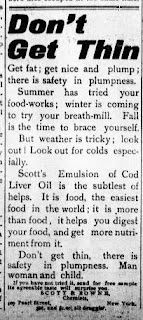Logistics, tips, techniques, thoughts, experience
I took some vacation days last week and had a yard sale on Saturday.
Oh, my, it was a lot of work! It was worth it, but I'm glad the kids helped. I don't think I could have done it without the muscle they provided.
Pricing and packaging
I priced everything in dollars or in multiples of 25¢ to simplify the money and the math. As much as possible, I used self-adhesive stickers. On clothing, I stuck the stickers to the tags and then stapled them to make sure they would stay. When there was no good place to put a sticker, I used a homemade tie-on tag, made of duct-tape-backed paper.
I put the clothing I was selling on hangers, because I despise piles of clothing at garage sales. I also don't like piles of sheets and curtains, so I folded the curtains and put them in plastic bags with descriptive labels, and I rolled the sheets and secured them with rubber bands.
Location, location, location!
I packed all the priced items in boxes and hauled them to my daughter Keely's house. She lives on the corner of a busy intersection in town. I thought that would be a better yard sale location than our home in the country. As Keely noted, the directions, "Turn off the paved road and...", discourage the timid.
Because I felt the location was so good, I decided not to run a newspaper ad. Instead, I invested about $15 in ready-made garage-sale signs. I could have made them by hand, but I decided to go with convenience, durability, and neatness.
What I've described so far took from Tuesday through Friday to accomplish. After I got home from hauling boxes to Keely's on Friday night, I loaded the saw horses, tables, etc. on the truck and threw an old bicycle on top for good measure. Thank goodness for bungee cords.
Yard sale day

On Saturday, I got up at 4:30 a.m. (Ugh! For me, that's the middle of the night!) After a shower and a cup of coffee, I carefully drove the loaded truck to town.
Taurus, bless his heart, unloaded the tables and helped get everything set up. I used tablecloths so the merchandise would look more like treasures and less like trash. I also tried to put nearly everything on an elevated surface to make it easier to see and shop.
The photo above was taken about 7:00 a.m., just after we put out the signs. We put several signs along the two street-sides of the yard, and at the corner, we put a big box with a yard sale sign on each side so anyone who stopped at the intersection could see it. A large rock inside the box kept it in place.
The first customers arrived just a few minutes after the photo. I was a little dismayed when several people breezed through the sale without buying anything. I know now that the earliest shoppers are likely to be bargain hunters. They are in a hurry because they are hitting as many sales as possible, trying to skim the cream from each.
I posted several signs that said, "Please make an offer if it's priced too high," but most of the customers didn't bother to dicker. They were decisive and fairly quick. They walked through, and if they liked something they bought it. I think that means that my prices were either fair or cheap. It really doesn't matter; the fact is that they gave me money and took away something that I didn't want or need anymore.
Final clearance
About 1:00 p.m., Keely and I made a half-price table with many of the remaining items. We made a big sign, "Everything on this table 1/2 price", and hung it so it could be seen from the street.
The two highest-priced items I sold were $17.50 and $15.00. Nearly everything else was 50¢ or $1.00. When we closed the sale at about 3:00 p.m., I had taken in a little over $140. I had some expenses -- yard sale signs, a sheet of plywood -- but I won't have to buy them again for the yard sale that Keely says we're having next spring.
Some items didn't sell, and I sorted them as we packed up. I donated some things to the rummage sale that our church will be having in November, I put 2 boxes of things for next spring's yard sale in the shed. A few things came back into our house -- half a dozen books and several pieces of clothing that I decided to keep.
Lessons learned for the next sale
One thing I hope I do differently next time is to start preparations earlier. It took longer than I expected to sort out and price what I wanted to sell. I hope after the next sale that I feel like the entire house has been cleansed, not just a few rooms.
Another thing I learned is to have more $5 bills on hand. Just one roll of quarters would have been enough. I had more $1 bills than I needed. However, I had to send Keely to get a couple of $20 bills broken, late in the sale, because I ran out of $5 bills.





















